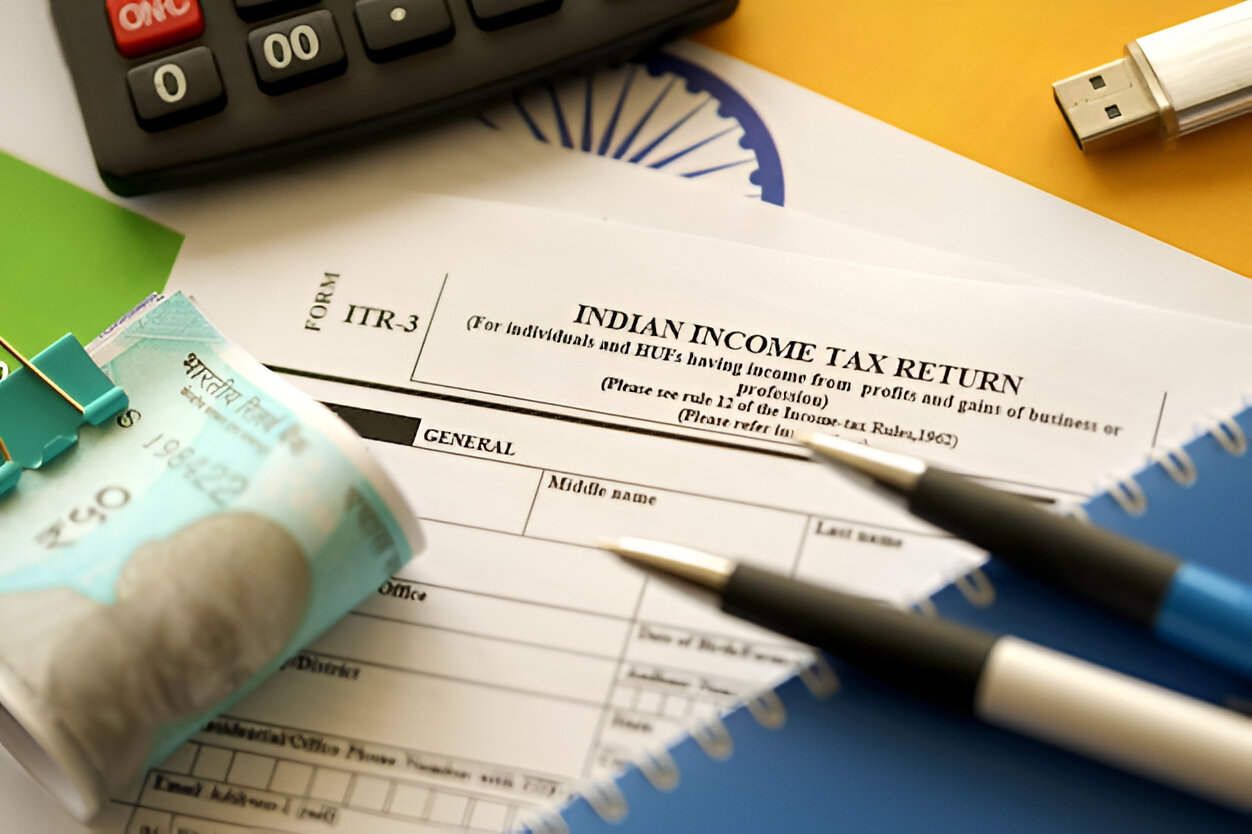Filing your Income Tax Return (ITR) can be a daunting task, especially when the forms and rules keep changing. For Assessment Year (AY) 2025–26 (FY 2024–25), the Income Tax Department has made several important updates to streamline the process and increase transparency. This guide outlines the major changes introduced in ITR-1 to ITR-5, including expanded eligibility, new disclosure requirements, and rule updates across deductions, capital gains, and more.
Key Changes in ITR Filing for AY 2025–26
1. Expanded Eligibility for ITR-1 and ITR-4
Taxpayers with long-term capital gains from listed equity shares and mutual funds under Section 112A can now file ITR-1 or ITR-4—only if:
- The gains do not exceed ₹1,25,000, and
- There are no carry forward or brought forward losses.
2. Aadhaar Enrollment ID No Longer Accepted
As per Budget 2024, you cannot use Aadhaar Enrollment ID for:
- Applying for PAN
- Filing your ITR
If you don’t have a valid Aadhaar number, you cannot file your return for AY 2025–26.
3. Opting Out of the New Tax Regime (ITR-4)
Small business owners filing ITR-4 must:
- Confirm past submission of Form 10-IEA, and
- Disclose if they wish to continue opting out of the new tax regime.
4. TDS Section Mention Required
For all TDS entries, you now need to:
- Specify the section under which TDS was deducted (e.g., Section 194J, 194A, etc.).
5. New Capital Gains Reporting Rules
For sales of capital assets, the ITR forms now:
- Require detailed reporting based on sale date (before/on/after 23 July 2024).
- Use different tax rates and indexation rules accordingly.
6. Buy-Back Proceeds Treated as Deemed Dividend
From 1 October 2024, proceeds from buy-back of shares (by listed companies) will:
- Be considered dividend income under “Income from Other Sources.”
- Sale proceeds reported as zero—enabling a capital loss that can be carried forward for 8 years.
7. Disability Deduction (Sections 80DD & 80U)
Claiming a deduction under Sections 80DD or 80U now requires:
- Acknowledgement number of the disability certificate via Form 10-IA.
8. Asset Reporting Threshold Increased
Previously: Required for income > ₹50 lakh
Now: Required only if total income exceeds ₹1 crore
Asset and liability disclosure in Schedule AL is mandatory beyond this limit.
Enhanced Disclosure Requirements by Section
🏠 HRA (Section 10(13A))
Taxpayers claiming HRA must disclose:
- Place of work
- Actual HRA received
- Actual rent paid
- Basic Salary + DA
- 40% or 50% of Basic Salary (metro vs. non-metro)
Home Loan (Section 24(b), 80EE & 80EEA)
Required details:
- Lender’s name
- Loan account number
- Sanction date
- Loan amount
- Year-end closing balance
- Interest paid
Section 80C (Investments)
New requirements:
- Document or receipt number
- PPF account number
- Insurance policy number
Section 80D (Health Insurance Premium)
Now required:
- Insurance company’s name
- Policy or document number
Section 80DDB (Specified Diseases)
Disclosure needed:
- Name of the specified disease
Section 80E (Education Loan)
Mandatory details:
- Lender/bank name
- Loan account number
- Date of sanction
- Total loan amount
- Outstanding as of 31 March
Section 80EEB (Electric Vehicle Loan)
For deduction on EV loans:
- Lender/bank name
- Loan account number
- Sanction date
- Loan amount
- Outstanding as of 31 March
Frequently Asked Questions (FAQs)
Q1. Can I still file ITR-1 if I have capital gains?
Yes, but only if the capital gain is under ₹1,25,000 from listed equities or mutual funds and no loss carry forward exists.
Q2. Is Aadhaar mandatory for filing ITR?
Yes. Aadhaar Enrollment ID is no longer accepted—you need a valid Aadhaar number.
Q3. Who must report assets and liabilities in ITR?
Only taxpayers with a total income exceeding ₹1 crore must fill Schedule AL.
Q4. What if I forget to include the TDS section?
Your ITR may be considered incomplete or inaccurate, possibly leading to notices or delayed refunds.
Q5. What is Form 10-IEA?
This form is used to opt out of the new tax regime. ITR-4 filers now need to confirm past submission and whether they wish to continue opting out.
Q6. Why is buy-back income now a deemed dividend?
To plug tax leakage and ensure uniform tax treatment for share buy-backs by listed companies, the proceeds are taxed like dividends.
Q7. Can I claim 80C without receipts now?
No. You must provide receipt numbers, policy numbers, or account details for investments under 80C from AY 2025–26 onwards.


